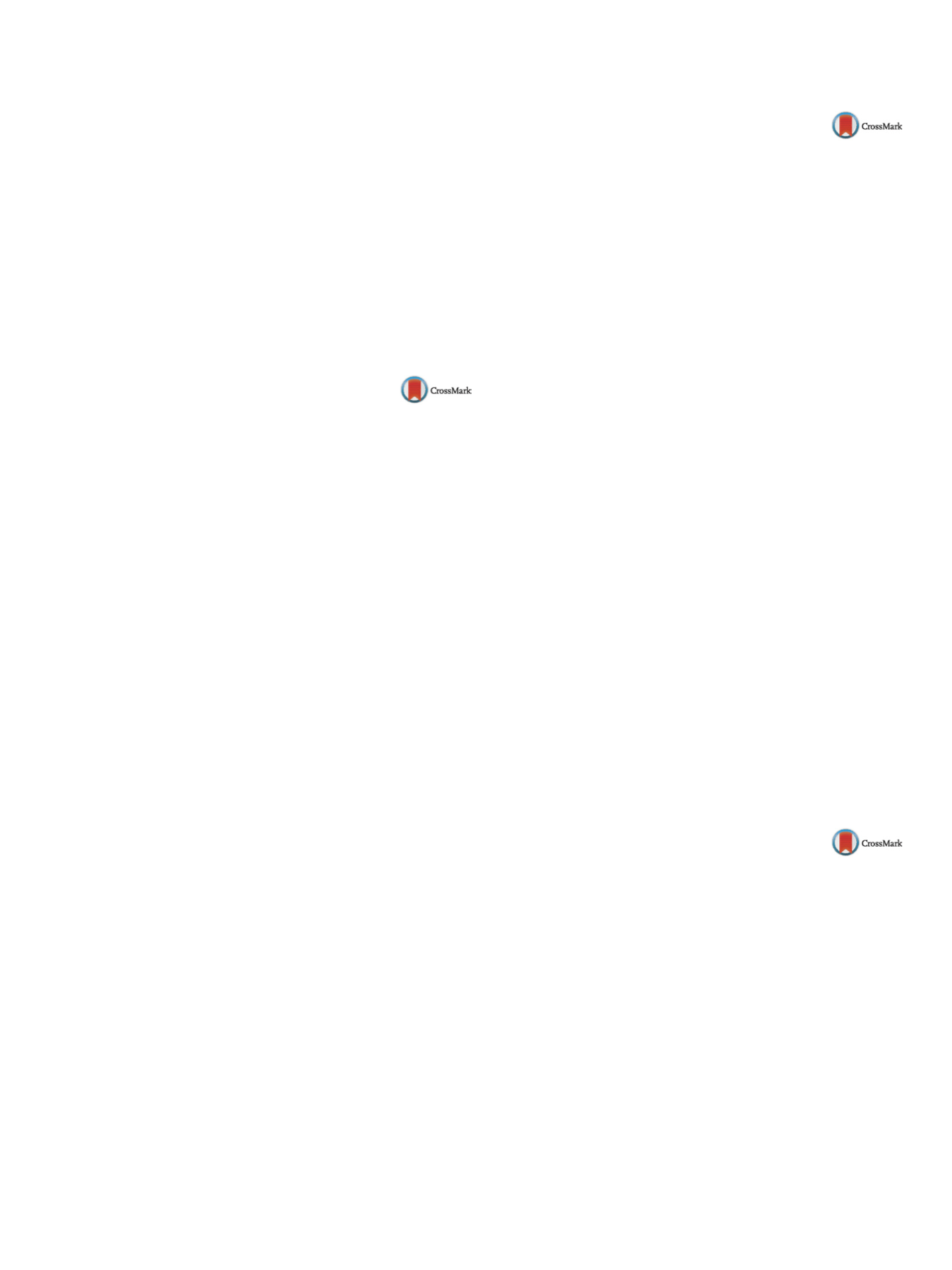

25th European Congress of Psychiatry / European Psychiatry 41S (2017) S303–S364
S327
that residual insomnia symptoms were significantly associated
with these relapse cases (OR = 5.290, 95% CI, 1.42 to 19.76). Regar-
ding quality of life, residual core mood and insomnia significantly
predicted the EQ5D scores at 6 months post-baseline (B =
−
2.670,
95% CI,
−
181 to
−
.027, and B =
−
3.109, 95% CI,
−
172 to
−
.038, res-
pectively).
Discussion
Residual symptoms are common in patients receiving
treatment for depressive disorder and were found to be associated
with relapses and quality of life. Clinicians need to be aware of
these residual symptoms when carrying out follow-up treatment
in patients with depressive disorders, so that prompt action can be
taken to mitigate the risk of relapse.
Disclosure of interest
The authors have not supplied their decla-
ration of competing interest.
http://dx.doi.org/10.1016/j.eurpsy.2017.02.258EW0645
Antidepressant therapy is followed by
normalization 0f serum albumin
conformation in patients with
melancholic depression
T. Syrejshchikova
1, N. Smolina
2 ,∗
, M. Uzbekov
3, G. Dobretsov
2,
V. Krjukov
4, V. Brilliantova
2, V. Krasnov
41
Lebedev physical institute, high energy, Moscow, Russia
2
Research and clinical center of physical-chemical medicine, medical
biophysics, Moscow, Russia
3
Moscow research institute of psychiatry, brain pathology, Moscow,
Russia
4
Moscow research institute of psychiatry, affective disorders,
Moscow, Russia
∗
Corresponding author.
Objectives
Discovery of biomarkers for evaluation of efficacy of
psychopharmacotherapy is important task.
Aim
To study parameters characteristic for albumin binding sited
in melancholic depression (MD) using fluorescent laser spectro-
scopy in range of 30–50 picoseconds.
Methods
22 patients with MD (dep) (F33.1 and 2) were inves-
tigated in dynamics of antidepressant therapy (venlafaxine:
75–150mg/daily) for 30 days. Control group (con) consists of
54 volunteers. Decay of fluorescence amplitude (A) of fluores-
cent probe K-35 from serum albumin was measured using laser.
Earlier, we revealed 3 binding sites in albumin with amplitudes
A
1
, A
2
and A
3
with decay time of 1, 3 and 9 nanoseconds,
respectively.
Results
There was revealed significant decrease of amplitude A
1
dep
, normalized on mean value of A
1
for controls (A
1 dep
/A
1 con
), for
patients with MD after treatment with venlafaxine. In this case,
A
1 dep
values decreased and were equal to A
1
values of controls
(
P
< 0.01): A
1 dep
/A
1 con
before treatment–1.23 and after 30 days
of therapy–0.97 relative units; for controls this value was–1.00
relative units. The same type of normalization was observed for
amplitudes A
2
and A
3
of melancholic patients. There were revealed
significant changes of A
3
/A
1
ratio that points out on conformatio-
nal changes of serum albumin molecule in dynamics of venlafaxine
therapy.
Conclusion
We have registered unidirectional changes in albu-
min molecule in patients with MD. Investigated parameters can
serve as potential biomarkers for evaluation of efficacy of psycho-
pharmacotherapy.
Disclosure of interest
The authors have not supplied their decla-
ration of competing interest.
http://dx.doi.org/10.1016/j.eurpsy.2017.02.259EW0646
Usage of selective
serotonin-noradrenalin reuptake
inhibitors in treatment of depressive
disorders
M. Uzbekov
1 ,∗
, N. Maximova
21
Moscow research institute of psychiatry, brain pathology, Moscow,
Russia
2
Moscow research institute of psychiatry, affective disorders,
Moscow, Russia
∗
Corresponding author.
Objectives
Relevance of current investigation is conditioned by
the high prevalence of depression in population and tendency of
increased rate of relapses.
Aim
To study efficacy of selective serotonin-noradrenalin reup-
take inhibitor–milnacipran in treatment of depressive disorders.
Methods
There were investigated 22 patients. Patient’s state was
defined as depressive episode (F32.1) and recurrent depressive
disorder (F33.1). Mean age–33 years, duration of disease–from
2 weeks to 18 years, duration of current depressive episode–5.3
months. Mean point according to HAM-D scale before treatment
was 24.0. Patients were investigated in dynamics of antidepressant
therapy (milnacipran–50–150mg/daily) for 4–5 weeks.
Results
Efficacy of treatment with milnacipran was 82%
(18 responders, 4 nonresponders). In responder’s group decrease
of depressive symptoms was started after 1 week of treatment
and practical reduction of all these symptoms was observed after
4–5 weeks of therapy (points of HAM-D scale–0.81). Patients of
this group receive milnacipran as supportive therapy at least for
3 months after signing out of clinic. During 1 year after signing
out of clinic, there were no signs of aggravation of patient’s state.
2 patients independently discontinue to take the medicine; there
were aggravation of state and they were hospitalized in psychiatric
clinic.
Conclusion
Milnacipran is effective in treatment of depressive
disorders, ensured effective reduction of depressive symptoms.
Its therapeutic effect is realized rather quickly. Milnacipran can
be recommended as antidepressant of choice for prophylaxis of
depressive disorders.
Disclosure of interest
The authors have not supplied their decla-
ration of competing interest.
http://dx.doi.org/10.1016/j.eurpsy.2017.02.260EW0647
The choice of anesthetics and the
effect on the Hamilton depression
rating scale in therapy resistant
depression
F. van Mensvoort
1 ,∗
, R. Teijeiro Permuy
2, C. Rijnders
11
GGz Breburg, Tilburg, The Netherlands
2
Elisabeth-TweeStedenziekenhuis, MPU, Tilburg, The Netherlands
∗
Corresponding author.
Introduction
The Dutch guideline ECT does not favor any anes-
thetic drug during electroconvulsive therapy. Although there are
differences in seizure duration which may influence the effect
of ECT, ethomidate, methohexital and propofol are “equal”. The
influence of switching anesthetics during ECT is unknown. The
reason for switching anesthetics is insufficient improvement in
depressive symptomatology which is based on clinical picture. The
Hamilton is a multiple item questionnaire which can give an indi-
cation of depression and which can evaluate recovery.
Objectives
Does the choice of anesthetics or switching anesthe-
tics influence the effect of ECT on the Hamilton depression rating
scale?


















